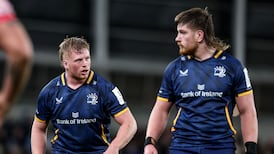The Lions are a machine, and they've needed to be. To transport 41 players, plus add-ons, and up to around 40 support staff and some 20 tonnes of luggage around New Zealand, taking in roughly 50,000km of air and road transport along the way, requires detailed planning.
It’s twice the size of your average summer tour, and twice as long. Furthermore, unlike summer tours where the hotels and transport are laid on by the host union, the British & Irish Lions are very much an independent entity, as well as being the cream of four countries rather than one.
Entering the final weekend, there’s hardly been a hitch off the pitch and the Lions - surprise, surprise - have remained competitive until the end.
Central to all of this has been Ger Carmody, the Lions’ director of operations. He began his work as long ago as February 2015, before being formally seconded from his role as team services manager with the IRFU to take up his Lions’ role on a full-time basis in January 2016.
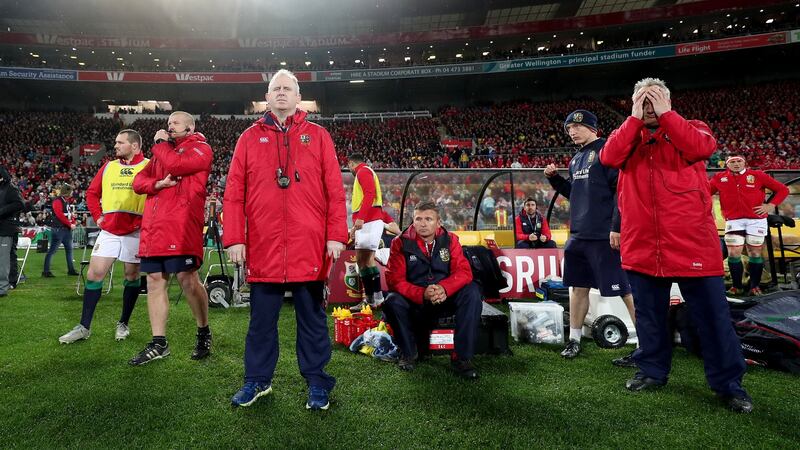
Before then, he undertook his first reconnaissance mission to New Zealand in June 2015 for a fortnight. Carmody arrived with a fixture list and a blank sheet of paper, with no coaches having as yet been appointed. “It was an unbelievable trip. I looked at as many hotels, training venues, facilities, network vendors, bus companies, etc . . . as I could to put a dossier together for the coach whenever he came on board.”
Enormity
He also had to meet with the NZRFU and explain the enormity and uniqueness of the Lions, as most of those involved in hosting the tour in 2005 had moved on. The outlining of the tour took shape.
Carmody returned to New Zealand in June 2016 for his second reconnaissance mission, in tandem with the Lions CEO John Feehan, head of communications Dave Barton, chief operating officer Charlie McEwen and head of commercial Anna Voyce.
This entailed their first structured meeting with the NZRFU, and a narrowing down of hotels, facilities and vendors to two or three choices in each host city or town. “The reason for travelling in June was to see the weather conditions at that time of year. There was very little point in coming in January.”
He also met with the airlines for chartering flights. “I didn’t want to use ATRs, propeller planes. They’re not big enough and they’re subject to weather. We had jet aircraft.” He also met with laundry and bus companies, and all the services the Lions would require.
"Peter White, our liaison officer from New Zealand Rugby has been fantastic. He's worked with me on five tours with Ireland and I trust him implicitly, says Carmody, who had similar briefs for the Irish tours of 2006, '08, '10 and the World Cups in 2011 and 2015.
Even the Lions have budgets, but akin to when Real Madrid are looking to buy a player, the prospective sellers up the price. "Vendors want to get a premium on the Lions and that was a challenge for us. In terms of facilities and hotels, a huge amount of negotiations went on. Some facilities were looking for four or five times what they would normally be. Some we reduced by 50 to 60 per cent through negotiations."
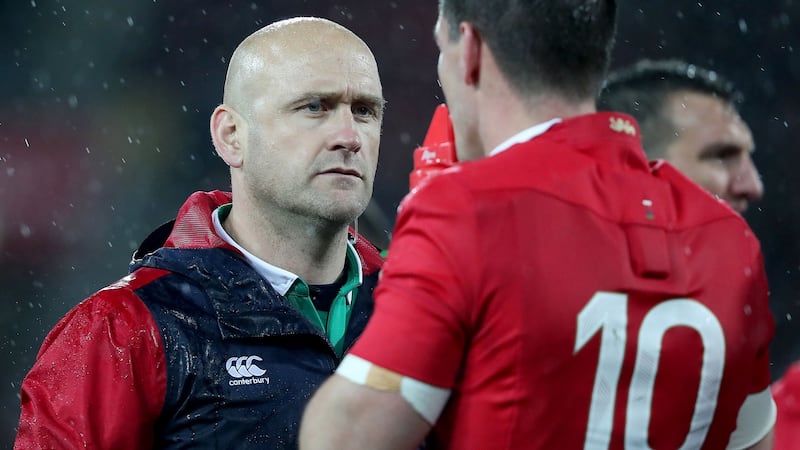
By the end of that second trip, Carmody had block booked one, two or three hotels in every host city or town, and all this for a travelling party of around 80 or 90 people. In addition to the 41 players, with scope for call-ups, there have been around 30 back-up staff, as well as those representing commercial partners.
Frog-hopped
They had to put a freight plan in place for two 40-foot containers of training equipment, which frog-hopped around New Zealand, as well as one for the Vale of Glamorgan and Carton House squad get-togethers. These contained scrum machines, hit shields, cones, agility balls, body suits, gym gear and so forth.
Warren Gatland was appointed in September 2016, and he and Carmody returned to New Zealand that month to finalise hotels and training facilities. The international flights having been Carmody's first task, the internal flights and transport were finalised in October 2016.
Carmody and Gatland visited every single training pitch, gym, pool and hotel. “When I’m assessing hotels the first thing is team rooms,” says Carmody, “to make sure we’ve adequate space for our leisure, analysis and medical needs. We’ve pretty much got a mobile office on the go.
“The second thing is beds, and making sure the players have two double beds in every room. They twin and they’re big guys, and we want to make sure they have a good night’s sleep.
“The third thing is food, and that the hotel can cope with the needs of a modern-day athlete, and also location, so that we’re not on buses for long periods.”
Gatland chose the remaining heads of department, in analysis, strength & conditioning, medical and security, and they all returned to New Zealand in January of this year to finalise everything. Tom Stokes, previously the England operations manager, worked out the storage and freight facilities for their two 40 foot containers, and marquees for training grounds which didn't having changing facilities.
Messy Monday
On March 21st, the management meeting had their first meeting in London, where Carmody gave a two-hour presentation. The 41-man squad was announced on April 19th, and so every single piece of kit for the players, 70 to 80 per player, had to be designed, made and embroidered by Canterbury, and delivered in a two week bloc. All of this culminated in "Messy Monday", aka Registration Day on Monday, May 8th in London.
After the two training camps, the squad attended the farewell banquet in London on May 28th, departed the next day, arrived on Wednesday 31st, and played their first of 10 matches in Whangarei on Saturday, July 3rd.
Six weeks on, Carmody says: “I couldn’t fault it. New Zealand have hosted us so well. The Maori welcome at Waitangi was breathtaking. In all the times I’ve been here, I’ve never experienced anything like that. The sea of red has just been awesome. What an experience.”
Vinny Hammond, a 32-year-old from Dublin, is one of the Lions' three video analysts along with Rhodri Bowen, who works with Gatland and Howley, and England's Mike Hughes, who works with Steve Borthwick and Graham Rowntree. Hammond works with defence coach Andy Farrell, as he does with Ireland meaning they all have the same roles as they have with their international teams.
For Hammond, and his fellow video analysts, it’s been intense. Having done all their preparatory work before arriving, they still have to update their work on each of the Lions’ opponents. All the while every match gives them a mountain of material on each player in the Lions squad. Within an hour of the full-time whistle, they’re back to work, sometimes through the night.
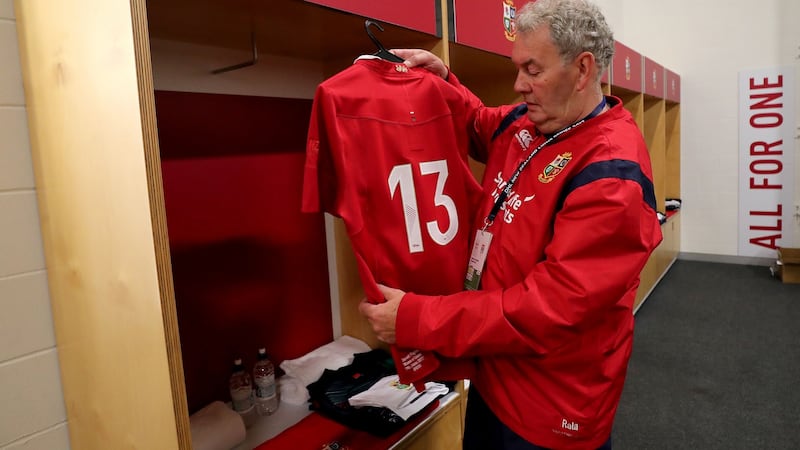
“I sleep the most out of the three of us. Rhods would get on average three hours (sleep) a night. Mikey would probably get a little bit more, and I would get the most. They think I’m a big sleeper, but I’d still be under five or six. They’re very good at their jobs. They work tirelessly, and we have really good crack between us.”
Shattered
For example, Hammond kept a record of his first week’s sleep patterns each night: two hours and 17 minutes, seven hours 25 minutes, three hours 14 minutes, two hours 55 minutes, three hours 46 minutes, four hours and one minutes, two hours 59 minutes, and three hours and one minute.
Like most video analysts, Hammond looks shattered.
But the memories will live forever. "It's been an unbelievable experience. We all have the same roles, but we're just doing it in a different team room. The other day I had Alun Wyn Jones chasing me down a hill in Queenstown in a luge. That's quite surreal, but at the time you don't think anything of it. But for the last five years I've been trying to work out what he does at lineouts."
It's the same with Gatland, Howley and Neil Jenkins, and regular Irish-Welsh slagging. "In a couple of weeks' time we're back to being enemies again, but I'll never walk past those guys without having a bit of a laugh and a joke with them now, which is special."
Shane Whelan has been the Lions head of digital since October 2012. He worked on the last tour, the first half from home, before travelling to Australia for the test series.
Four years on, the change has been scarcely credible. “We might have produced videos for our websites, now we’re producing behind-the-scenes videos across so many platforms. On some days we’re putting out 100 pieces of content.”
He's helped by a team in their office in Ballsbridge and one out here, covering press conferences, training sessions and events around the matches, and as well as the fans. "We have a behind-the-scenes video crew, a social media team, and 80 per cent of our audience is on UK/Ireland time, and 20 per cent here. A lot of our content has been saved for back home.
“The difference between the two tours has been immense,” Whelan explains. “For example, the team announcements are averaging 400 to 500,000 views per video, which is huge. We’ve a combined audience across all the channels of about 1.3 million.”
Highlight
They've reached out to new audiences which scarcely existed, or not at all, four years ago, with 220,000 followers on Instagram, 780,000 on Facebook and 414,000 on Twitter. Another new concept, namely Your Club/Your Lion has invited clubs who've been part of each player's development, to send individual videos to players.
All agree that the highlight until this weekend was last Saturday. Carmody says: "I took a minute to myself after the excitement of winning, and looked around the stadium and all the red. At that point in time you wouldn't want to be anywhere else in the world. It was up there with the (Irish) Grand Slam in 2009, the Championship wins and the World Cup win over Australia in Eden Park. "
On the bus carrying the Lions squad, Carmody is usually sitting alongside Gatland. “Warren is fantastic to work with. He knows what he wants, but he’s very laid back, so he’s very easy to work with. He’s a gentleman. He’s a family man. He’s very kind. He’s very understanding.
“Look what he’s pulled together. I think some of the stuff that’s been written about him is horrendous. It’s disgraceful. He’s a Kiwi and more than anyone else he’s respected the traditions over here. We spent weeks learning songs to make sure we respected the welcomes over here. He understands the culture. We’ve met his family. They’ve hosted us in his home. Hand on heart, I would not have a bad word to say about the man.”
And it’s all gone remarkably smoothly.
“Win, lose or draw,” says Carmody, “we’ve done everything in our powers off the field to ensure that they can do what they need to do on the pitch. Ultimately you can do no more.”
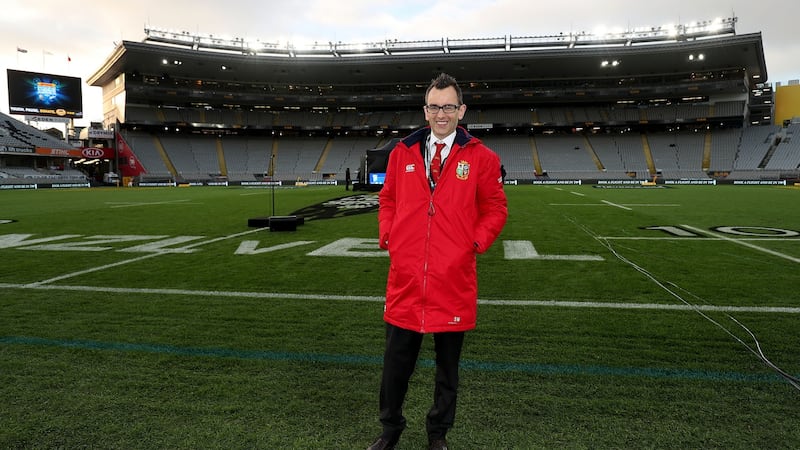
Numbers Game
150
Suit measurements. Every single England, Ireland, Scotland and Wales player in the Six Nations was measured for suits and kits in January
20
Tonnes of luggage and equipment to be moved with the Lions squad
50,000km
Distance travelled by the Lions by plane and bus on the tour
The Irish in the Lions background
John Feehan
On his fourth tour as Lions CEO, a job he assumed in tandem with the role of CEO of the Six Nations, in 2003, having previously been commercial director for the Lions and the Six Nations. He was also CEO of the Pro12 for five years. From Dublin, he was a tighthead prop for Trinity, Old Belvedere, Old Wesley and Leinster.
Ger Carmody
Has been with the IRFU since 1992, where he worked as the team services manager.
Dr Eanna Falvey
His first tour as the Lions' head of medical. From Cork, where he has a practice, as well as working in Santry. He'd been the Irish team doctor until stepping down after the World Cup and had been number two to the long-serving Dr James Robson on the 2013 tour. "It was a natural progression to step up to lead in the medical area."
Vinny Hammond
One of the three video analysts with the Lions. From Dublin, Hammond played with St Mary’s and UCD before a wrist injury forced him to retire at 21, whereupon John McLean asked him to run the rule over their new computer analysis system. After taking a Masters in Performance Analysis, he joined the IRFU as its high performance analyst in 2008, and worked with the national under-age sides before becoming part of Joe Schmidt’s backroom team in 2012.
Phil Morrow
Works in the strength and conditioning department under Paul Stridgeon. Morrow worked with the Ulster Academy and then the senior squad from 2001 to 2008, joined the IRFU and then took over from Dr Liam Hennessy as IRFU's head of fitness in 2010. Having worked with the Irish team for two years, he then joined Saracens, where he will return after this tour. The best in his field, according to Mark McCall.
Paddy ‘Rala’ O’Reilly
The popular Rala is the Lions’ baggage master, having been lured out of retirement after fulfilling the same role with the Irish team from 1994 to 2015, during which time he worked with Gatland from 1998 to 2001. “Myself and Gats talked about this and we felt that Rala adds an X factor,” says Carmody. “Aside from the basic duties such setting up training facilities and changing rooms, he brings a great personality to the whole squad. He’s one of these bubbly characters that pulls the guys together. He’s an energiser.”
Brian Cunnife
The Lions’ sports scientist, Cuniffe analyses the players GPS results and overseas their hydration and nutrition, and monitoring their fitness levels, heart rates and so forth. He works full-time with British Olympics.
Devin Revins
On his first Lions tour as one of their three masseurs, who work with two physios. Revins, from Youghal, has worked with the Munster team since 2005 and the Irish team since 2007, Natural Therapy Clinic in Glanmire, where he lives.
Shane Whelan
The Lions head of digital. From Abbeyleix, Whelan worked with Basketball Ireland on their communications team before joining the Six Nations and the Lions, as well as the Pro12, in 2012. "A lovely guy and a great tourist," says Carmody.
Gemma Crowley
The Irish women’s team manager, from Cork, she worked on RWC 2015 as Ireland’s pool manager, and came on board as the Lions team services executive in October 2016 to manage all of the their transport. “She’s vastly experienced and just outstanding,” says Carmody.
Belinda Armstrong.
A Kiwi who lives in Ireland. She looks after all the administration, finance, hotel billing and ticketing. A vital cog and key to Carmody’s work.



